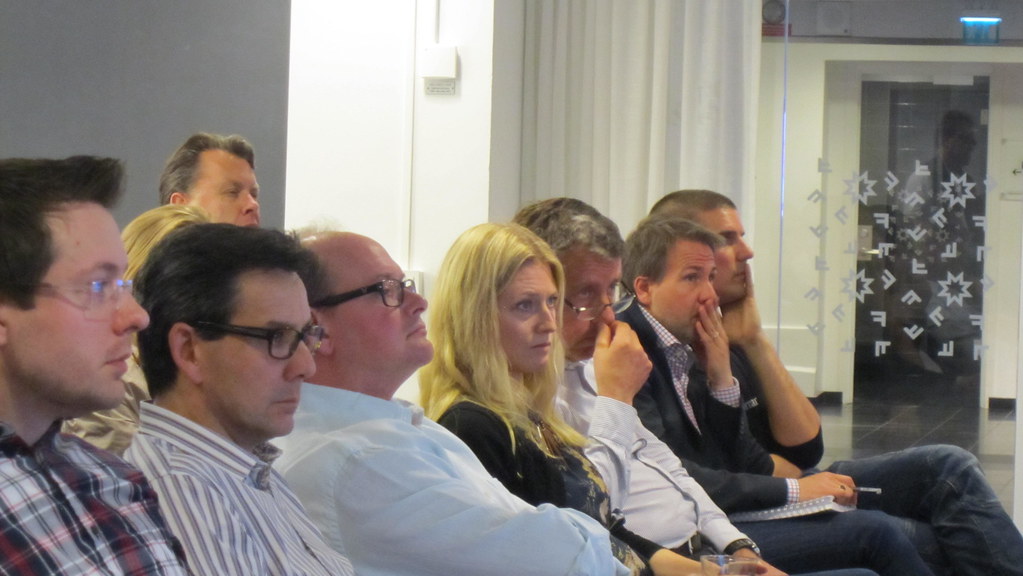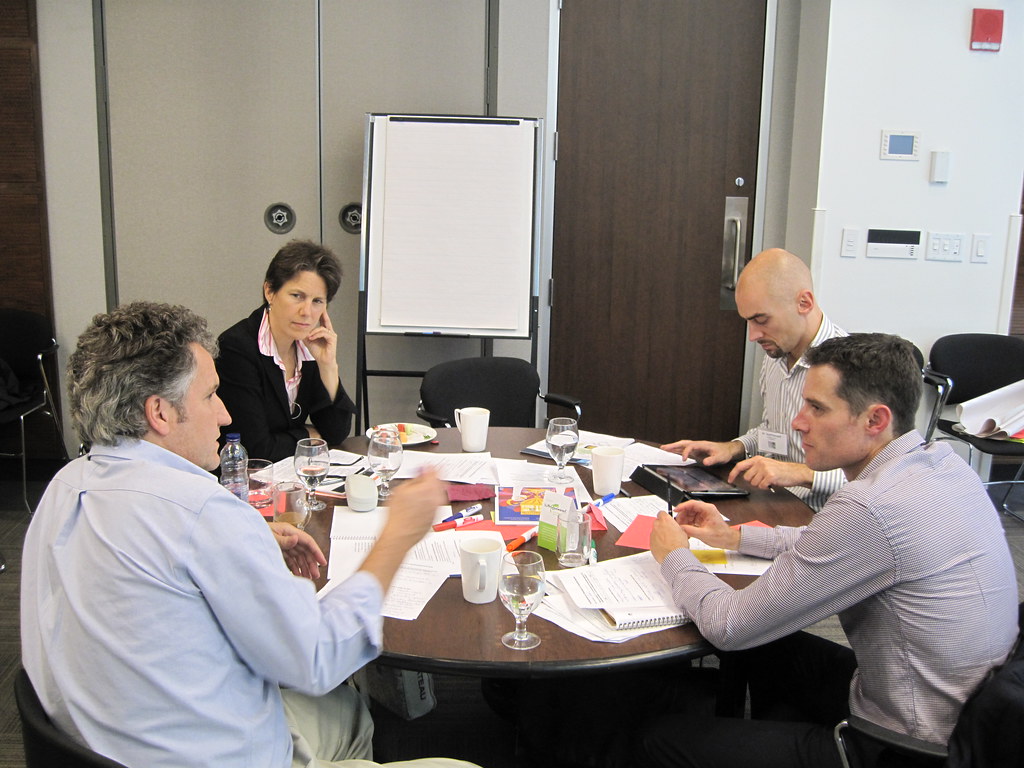
Ah, love! It’s often touted as the foundation of enduring human relationships, shaping everything from personal bonds to professional alliances. While the romantic notion of two individuals falling for a shared vision or a groundbreaking product is certainly appealing, the reality of a business partnership, much like a marriage, demands a far more pragmatic approach. It’s a connection woven with business, legal, and financial ties, requiring a meticulous alignment of expectations and aspirations.
Indeed, some of the most celebrated brands in history—think Steve Jobs and Steve Wozniak of Apple, or Ben Cohen and Jerry Greenfield of Ben & Jerry’s—are built on the bedrock of strong partnerships. These alliances, while inspiring, have undeniably navigated their own share of successes and significant challenges. Without the proper safeguards and upfront discussions, what begins as a fruitful alliance can quickly devolve into a painful, costly “divorce.” It’s why, unlike traditional marriages where prenuptial agreements might be optional, a business ‘marriage’ absolutely requires candid, often uncomfortable, conversations right from the start to protect the professional affection and shared goals.
Navigating the journey to find the ideal business partner can feel akin to searching for a unicorn in a haystack. But when promising prospects emerge, the instinct to dive in headfirst must be tempered with diligent inquiry. Understanding your potential partner inside-out isn’t just a recommendation; it’s a critical imperative. Choosing the wrong companion can transform an entrepreneurial dream into an unforeseen nightmare. To help you build the strongest, most viable foundation possible, we’ve distilled 15 fundamental questions every aspiring business partner should explore and memorialize before tying the proverbial knot. These aren’t just questions; they are the bedrock for a prospering future, ensuring alignment, clarity, and resilience from day one.

1. **Have you been in a business partnership before?**This is a foundational inquiry, serving as a vital entry point into understanding a potential partner’s past experiences and operational style. Unearthing their history with previous joint ventures offers invaluable insights that extend far beyond a simple ‘yes’ or ‘no.’ It’s about gaining a nuanced perspective on their track record, identifying both the triumphs and tribulations that shaped their approach to collaboration.
By asking this question, you’re essentially requesting a summary of their past job experience within a partnership context. You want to understand the dynamics, the successes they contributed to, and the obstacles they encountered. Crucially, delving into the positives and negatives of these past alliances allows you to learn from their journey, helping you to effectively chart a course for your own potential collaboration and avoid known pitfalls.
This line of questioning also helps in gauging their communication and work style, offering glimpses into how they prefer to interact, delegate, and contribute. Furthermore, it illuminates their capacity for compromise and how they typically navigate conflict, which are indispensable qualities in any enduring business relationship. Ultimately, understanding their prior partnering preferences helps you ascertain whether their approach is compatible with your own, setting a solid groundwork for mutual understanding and operational harmony.

2. **How do you handle a crisis?**Every business, irrespective of its industry or size, will inevitably face moments of conflict or even outright crisis. The true test of a partner’s mettle, and indeed a partnership’s resilience, often emerges during these high-stakes scenarios. Therefore, understanding a potential partner’s temperament and methodology for navigating stressful situations is not merely advisable; it is absolutely critical for the long-term health and stability of your joint venture.
Before committing to a business agreement, you need to gain a clear picture of how they have historically managed such challenging circumstances. This isn’t just about their theoretical approach, but about concrete examples of how they’ve acted when the pressure mounted. Inquire about their calm under fire, their decision-making process when information is scarce, and their ability to work through complex problems methodically. Their responses will paint a vivid picture of their leadership style during adversity.
This question also extends to broader discussions about conflict resolution within the partnership itself. Clear communication and a well-defined plan are paramount for overcoming hurdles. By discussing work habits, preferred communication methods, and how disagreements are typically handled, you lay the groundwork for a transparent and honest environment. This proactive approach allows both parties to identify potential problems early, fostering a collaborative mindset aimed at finding solutions together rather than letting issues fester and escalate into major disputes.
Read more about: Secure Your Season: 10 Actionable Strategies to Prevent Identity Theft and Tax Fraud

3. **What is your communication style?**Effective communication is unequivocally the linchpin of any successful business partnership. Without clear, consistent, and mutually understood channels of interaction, even the most promising ventures can stumble and falter. This question isn’t just a formality; it’s an exploration into the fundamental mechanics of how you and your potential partner will exchange information, delegate tasks, and address concerns.
When evaluating their communication style, it’s insightful to observe not only their verbal response but also their practical approach to interacting with you. Are they direct and prompt when arranging meetings? Do they show a preference for text, email, or phone calls for different types of exchanges? These seemingly minor details offer significant clues into their operational rhythm and preferred methods for staying connected and keeping things moving. Understanding these nuances early on can save considerable time and prevent future misunderstandings.
Beyond the practicalities, this inquiry also naturally extends to how disagreements are approached and constructively resolved. A robust partnership needs a specific, agreed-upon process for conflict resolution, ensuring that minor friction doesn’t escalate into significant roadblocks. Furthermore, delving into individual leadership and communication styles helps align expectations for decision-making processes, ensuring that both partners feel heard and valued, thereby fostering a foundation of trust crucial for managing future financial and legal structures transparently.
Read more about: DIY Disasters Uncovered: 13 Epic Home Renovation Mistakes That Turned Dreams into Nightmares

4. **What do you see this business looking like in five years?**Once the initial groundwork of past experience and interpersonal dynamics has been laid, it becomes imperative to shift focus to the future. This question serves as a powerful compass, ensuring that both potential partners are not only on the same page regarding the immediate operational aspects but are also steering towards a shared ultimate destination. It’s an opportunity to harmonize individual and collective visions for the endeavor.
This discussion isn’t merely about broad aspirations; it requires a detailed exploration of short-term and long-term goals for the business. Have you both conceptualized the type of enterprise you wish to cultivate? Are your personal definitions of success aligned with how long each of you is willing to commit to the effort until those achievements materialize? These conversations are instrumental in establishing a cohesive strategic direction and developing a concrete business plan that reflects a unified vision.
Alignment in values and vision is the bedrock upon which shared aspirations for the future of your business are built. While individual motivations might have unique facets, the core beliefs, principles, and motivations driving the venture must be compatible. This question helps to identify where individual visions align and, equally important, where they might deviate, allowing for early discussions to bridge any gaps and ensure that both partners are rowing in the same direction, committed to the identical long-term trajectory.
Read more about: Beyond the Hype: How AI Algorithms are Radically Reshaping Global Energy Consumption and Pioneering a Sustainable Future

5. **Do you have a preferred exit strategy?**While the excitement of forming a new business partnership often dominates initial discussions, it is a mark of true foresight and pragmatic planning to address the less glamorous, yet equally vital, topic of an exit strategy. This question may seem premature, or even negative, but it is fundamentally about anticipating potential worst-case scenarios and establishing clear protocols to protect all parties and the business itself, should circumstances necessitate a partner’s departure.
Exploring a potential partner’s preferred exit strategy entails discussing the factors that might lead to an inability to continue in the partnership. This includes a candid conversation about the financial implications for both the departing individual and those who remain within the business. Such a discussion helps to proactively outline how assets would be divided, how ownership shares would be handled, and whether provisions like a non-compete clause would be in effect for a leaving partner.
This foresight extends to what are often referred to as the ‘Five D’s of Business Partnerships’: Death, Disagreement, Debt, Divorce, and Disability. These drastic and personal issues, though uncomfortable to discuss, must be planned for in advance and documented. For instance, what happens if a partner declares bankruptcy, or if a divorce impacts their stake in the business? A clear understanding and mutual agreement on these eventualities are crucial for drafting robust partnership contracts and ensuring the business can navigate unforeseen challenges without catastrophic disruption.

6. **What is your current financial situation?**Venturing into a business partnership necessitates a level of financial transparency that might feel intrusive but is absolutely essential. This question delves directly into the economic realities each partner brings to the table, providing a critical overview of the capital available for initial investments, operational costs, and future growth. Without a clear understanding of each other’s financial landscapes, formulating a realistic budget, securing additional funding, or even approaching lenders becomes a precarious exercise.
Both parties must be forthright about the capital they are working with. This involves more than just a surface-level declaration; it entails discussing existing portfolios, outstanding debts, and any financial obligations that could directly impact the business’s stability and growth. Such openness builds a foundational layer of trust, ensuring that both partners are fully aware of the resources and potential constraints at play. It’s a reciprocal expectation: be prepared to share this personal financial information about yourself as well, demonstrating your commitment to full transparency.
Ultimately, transparency regarding individual financial histories—including debts, credit scores, and investment portfolios—is paramount for establishing financial compatibility. This isn’t about judgment; it’s about mutual understanding and risk assessment. Knowing each other’s financial standing ensures that startup costs, investment decisions, and capital contributions are approached realistically and with a shared understanding of financial capacities, thereby solidifying the financial foundation of the nascent partnership.

7. **Would you consider yourself frugal in terms of spending money?**While the previous question addressed the broader financial situation, this inquiry drills down into a partner’s personal financial philosophy and spending habits, which are critical for gauging their approach to business expenditures. Spending habits influence far more than just significant investment decisions; they permeate the day-to-day operational costs and the overall financial health of a venture. A misalignment here can lead to friction, disputes over budgeting, and divergent approaches to resource allocation.
Understanding a partner’s perspective on frugality provides insight into whether they are adept at maintaining a budget and if they possess a conscientious approach to company funds. It’s about assessing their inclination towards judicious spending versus a more liberal approach. You don’t necessarily need an exhaustive breakdown of their personal daily expenditures, but rather an overarching idea of their money mindset and how it might translate into business practices, particularly concerning cost management and efficiency.
This conversation helps to ascertain if there are any specific spending areas where they acknowledge room for improvement, or if their budgeting acumen is a strong suit. Ultimately, having a shared or at least harmonized attitude towards financial management and spending is crucial. It contributes significantly to overall financial compatibility and ensures that both partners are aligned on the strategies for managing funds, controlling operational overheads, and making fiscally responsible decisions that support the long-term sustainability and profitability of the business.
Navigating the journey to find the ideal business partner demands a pragmatic and comprehensive approach. After establishing the foundational elements of experience, communication, and initial financial standing, it’s time to delve deeper into the nuanced aspects that truly define alignment and resilience. This involves exploring a partner’s risk tolerance, their commitment to capital contribution, and how profits will be distributed, ensuring financial compatibility is not just acknowledged but deeply understood. Equally vital are the personal dimensions: uncovering motivations, individual goals, life aspirations, and how success and failure are perceived, alongside the crucial element of time commitment. These deeper dives are essential for forging a truly aligned and enduring business partnership, transforming a shared vision into a robust, successful reality.

8. **Are you a risk-taker?**Every business venture inherently carries a degree of risk, and the ability to navigate uncertainty is a hallmark of entrepreneurship. However, if partners possess vastly different tolerances for risk, this disparity can become a significant source of friction, potentially derailing strategic decisions and operational harmony. Understanding a potential partner’s comfort level with risk is therefore not merely an interesting aside; it’s a critical component of assessing overall compatibility.
The context points out that while a “healthy amount of risk” is acceptable, a substantial difference in risk tolerance between partners can lead to complications. It’s imperative to explore whether they consider themselves a risk-taker and, crucially, to ask for concrete examples. These real-world scenarios provide far more insight than a simple yes or no, revealing how they have historically weighed potential rewards against possible downsides in their decisions.
This discussion also provides an opportunity to understand their decision-making framework when confronted with high-stakes choices. Do they prefer meticulous planning and conservative estimates, or are they inclined towards bold, swift action? Aligning on this spectrum, or at least understanding where each partner stands, allows for the establishment of clear protocols for managing business risks and ensures that both parties are comfortable with the chosen trajectory.

9. **How much capital do you plan to contribute to the business?**Beyond merely understanding a partner’s current financial situation, a specific inquiry into their planned capital contribution is fundamental for establishing a transparent and equitable financial structure for the new venture. This question directly addresses the practical implications of funding, influencing everything from startup costs and operational budgets to the pursuit of external financing and future investment opportunities.
The context highlights that business partnerships are often funded in various ways, from one partner bearing the majority of costs to an equal 50/50 split. Clarity on this point is essential even before delving into the legal intricacies of business formation. It’s about setting clear expectations regarding financial input from day one, ensuring both parties understand their roles in capitalizing the enterprise.
This discussion should extend to not just initial contributions but also potential capital injections in the first year, as outlined in the broader list of questions from the context. A mutual understanding of expected financial commitments ensures that resources are allocated realistically and that the business has a stable financial runway. It prevents future disagreements over funding needs and lays the groundwork for sound financial planning and growth.

10. **How do you expect to divide profits?**The equitable distribution of profits and the management of losses are cornerstones of any sustainable business partnership. While the excitement of launching a venture often takes precedence, a candid conversation about how financial returns will be shared is paramount. Without a clear, mutually agreed-upon framework, disputes over earnings can quickly erode trust and dismantle even the most promising alliances.
The context explicitly states the importance of discussing how profits (and losses) will be distributed. This isn’t just a matter of fairness; it’s about establishing clear ground rules before any legal processes commence. Such proactive discussions are vital for drafting robust partnership contracts and ensuring that financial expectations are transparent and aligned from the outset.
Delving into this question allows partners to consider various distribution models, perhaps tied to capital contributions, time commitment, or specific roles and responsibilities. It’s also an opportunity to discuss how losses would be absorbed, ensuring that the partnership is prepared for both favorable and challenging financial periods. This foresight is critical for maintaining financial harmony and protecting the long-term viability of the business.

11. **What motivates you?**Understanding the driving force behind a potential partner’s desire to engage in a business venture is perhaps one of the most crucial personal insights to uncover. While a shared vision for the business is important, recognizing the ‘why’—the underlying motivations—ensures a deeper alignment that transcends mere professional objectives. This inquiry delves into the core of their entrepreneurial spirit and personal values.
The context emphasizes that identifying the “why” behind what someone is doing is arguably the most important factor when starting a business. It’s about getting on the same page regarding the fundamental motivations. While individual motivations may not be identical, a shared understanding of the primary driving force behind the business is essential for consistent decision-making and enduring commitment.
This question provides a window into their values, both personal and professional, and how these values might tie into the business goals. Knowing what truly inspires and drives a partner helps to gauge their resilience during difficult times and their passion for the venture’s long-term success. It fosters a connection built on shared purpose, which is vital for navigating inevitable obstacles and building a truly cohesive team.
Read more about: Beyond the Resume: Unlocking a Candidate’s True Character with Transformative Personality Interview Questions

12. **What is one personal goal you are currently trying to achieve?**Beyond professional ambitions, exploring a potential partner’s personal goals offers valuable insight into their overall character, ambition, and growth mindset. The best entrepreneurs are often characterized by a relentless pursuit of self-improvement and a desire to achieve beyond their immediate professional scope. This question acts as a telling indicator of their drive and dedication.
The context notes that this is one of the most telling questions for discerning how ambitious and driven someone truly is. It provides a glimpse into their individual journey of self-betterment, revealing whether they are content with the status quo or constantly seeking new horizons. Such a mindset can translate directly into their approach to business challenges and opportunities, indicating a partner who is likely to push boundaries.
Furthermore, this inquiry helps to understand how they balance personal aspirations with professional commitments. It allows for discussions around work-life integration and whether their personal pursuits might complement or potentially conflict with the demands of the business. Ultimately, aligning with a partner who values personal growth can foster a dynamic and forward-thinking partnership that benefits from continuous development.

13. **If you didn’t have to work, what would you do?**While seemingly a simple ‘get to know you’ question, this inquiry often unearths a potential partner’s deepest passions and true priorities, offering a unique lens through which to view their dedication to the proposed business. It moves beyond conventional professional aspirations to reveal what truly ignites their enthusiasm, providing insight into their intrinsic motivations and potential sources of satisfaction outside of work.
The context explains that this question can reveal someone’s true passion, allowing you to learn where they would prefer to spend most of their time. The answer can serve either as a motivator, indicating a passion that might feed into the business, or as a potential distraction if their interests pull them far afield from the venture’s core focus. It’s about understanding their holistic view of life and work.
This discussion helps gauge whether their personal values align with the ethos of the business or if there might be underlying desires that could, at some point, divert their focus. A partner whose ‘non-work’ passions resonate with the business’s mission can bring an infectious energy and a more profound commitment. Conversely, significant misalignment might signal a partner less invested in the long-term grind, making this a crucial conversation for assessing sustained engagement.
Read more about: Mystery Solved: 11 Classic Commercials Who Vanished From Prime Time TV — And Where to Stream Them All Now.

14. **What do success and failure look like to you?**Establishing a shared understanding of what constitutes success and failure is paramount for maintaining alignment, setting realistic expectations, and fostering a constructive environment within any business partnership. Without this clarity, partners can find themselves operating with divergent benchmarks, leading to misunderstandings, frustration, and a fractured sense of achievement or disappointment.
The context directly advises, “Get on the same page now about successes and failures and thank me later.” This underscores the critical importance of having this conversation proactively. Knowing what a potential partner considers a challenge or a win allows both parties to understand how they will interpret outcomes, handle difficult situations, and celebrate accomplishments.
This inquiry is not just about financial metrics, but also about broader definitions encompassing impact, innovation, team satisfaction, or market presence. It helps clarify individual and collective aspirations, ensuring that both partners are striving towards a unified vision of triumph and are prepared to collaboratively analyze and learn from setbacks. This shared perspective creates a resilient foundation for navigating the highs and lows of entrepreneurship.
Read more about: Wheels of Misfortune: 14 SUVs Buyers Wish They Had Walked Away From Before the Test Drive

15. **How much time are you willing to commit to the business?**The commitment of time and effort is a tangible measure of a partner’s dedication and directly impacts the operational capacity and growth trajectory of the business. While not every partner’s commitment needs to be identical, a clear understanding of each other’s expected time investment is absolutely essential to prevent future resentments and ensure a balanced, productive working relationship.
The context states that while not every answer needs to be the same, you should at the very least know what to expect. This question helps to preemptively address potential imbalances, ensuring that neither partner feels overburdened or that one is perceived as not pulling their weight. It sets expectations around daily involvement, intense work periods, and the flexibility required.
This discussion also ties into the broader theme of prioritizing the venture amidst other personal and professional commitments, as hinted at in related context questions. By clarifying time commitment, partners can delineate roles and responsibilities more effectively, schedule meetings and workloads realistically, and build a partnership where contributions are understood and appreciated, fostering a sense of shared responsibility and mutual respect.
Embarking on a business partnership is undeniably one of the most significant decisions an entrepreneur can make, akin to forging a powerful, strategic alliance. By meticulously exploring these 15 essential questions, you’re not just conducting an interview; you’re laying down the foundational pillars for a future built on transparency, mutual understanding, and shared commitment. It’s about moving beyond superficial enthusiasm to truly gauge compatibility—financially, professionally, and personally.
Read more about: Unlock Top Value: Simple Secrets to Getting the Best Price on a Car Vinyl Wrap and Mastering DIY Installation
Remember, the goal isn’t to find a mirror image of yourself, but rather someone whose strengths complement yours, whose values resonate with your own, and whose vision aligns seamlessly with where you want to take the business. This diligent inquiry process, uncomfortable as some conversations may be, is your most potent tool for minimizing risk and maximizing the potential for a thriving, resilient, and profoundly rewarding partnership. Take your time, communicate openly, and trust your instincts—the right partner is out there, ready to build something remarkable with you. Happy exploring, and here’s to forging truly exceptional alliances!



